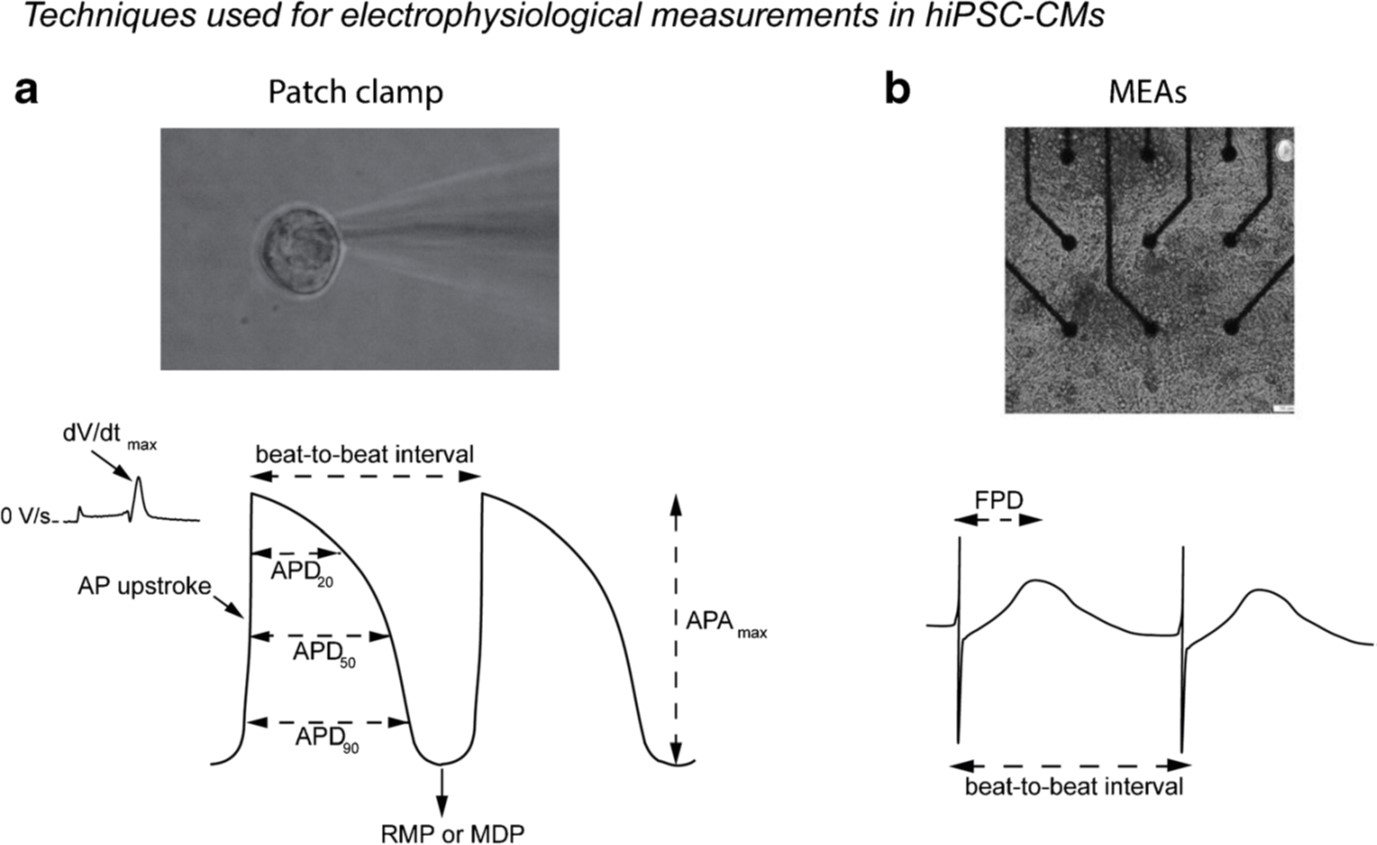


Human induced pluripotent stem cell derived cardiomyocytes (hiPSC-CMs)
The development of the induced pluripotent stem cell (iPSC) technology now provides the opportunity for generating and culturing iPSC-derived cardiomyocytes obtained from human material (human-induced pluripotent stem cell (hiPSC)-CMs).
Generation of hiPSCs starts by obtaining somatic cells from easily accessible human material, such as hair, blood, skin, fat, urine, or oral mucosa. These cells are reprogrammed to a pluripotent state by introducing pluripotency-associated genes, and hiPSCs thus generated can be kept in culture indefinitely. Next, hiPSCs are differentiated towards cardiomyocytes through a number of strategies. After approximately 8–12 days, areas of beating cells typically appear, which can be microscopically dissected and dissociated into single cardiomyocytes for subsequent electrophysiological and immunofluorescence analysis. This approach, which is both laborious and expensive, enables generation of patient-specific hiPSC-CMs for electrophysiological and pharmacological investigations.
Due to their relative immaturity, hiPSC-CMs display a number of essential differences as compared to adult human cardiomyocytes, and hence there are certain limitations in their use. Nevertheless, hiPSC-CMs enable investigation of patient- and/or mutation-specific disease mechanisms as well as identification and assessment of novel therapeutic strategies for arrhythmia syndromes.
Group members
Carol Ann Remme
Group Leader, PI
Vincent Portero
Post Doc
Simona Casini
Post Doc
Giovanna Nasilli
PhD Student
Gerard Marchal
PhD Student